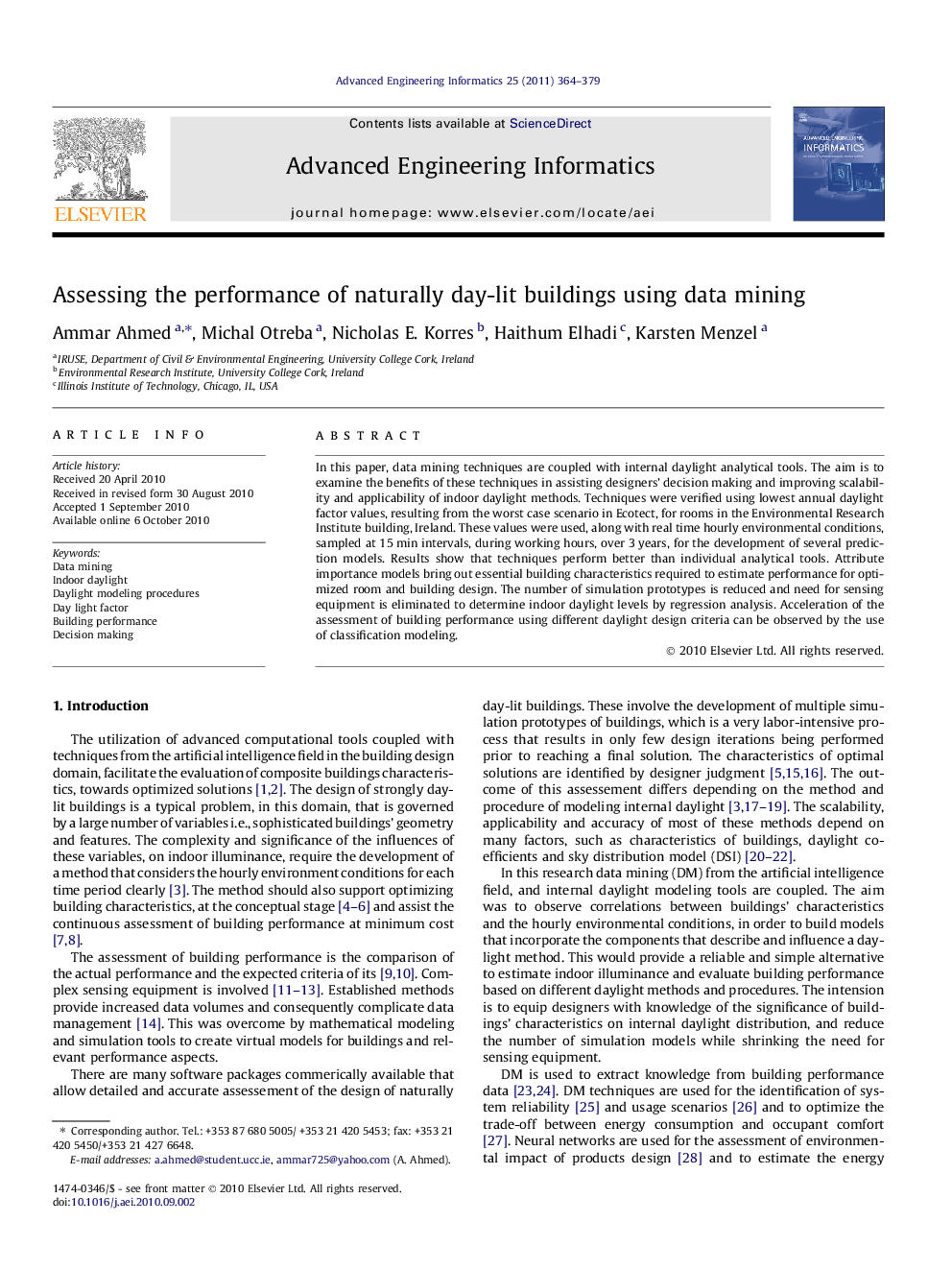| Article ID | Journal | Published Year | Pages | File Type |
|---|---|---|---|---|
| 242307 | Advanced Engineering Informatics | 2011 | 16 Pages |
In this paper, data mining techniques are coupled with internal daylight analytical tools. The aim is to examine the benefits of these techniques in assisting designers’ decision making and improving scalability and applicability of indoor daylight methods. Techniques were verified using lowest annual daylight factor values, resulting from the worst case scenario in Ecotect, for rooms in the Environmental Research Institute building, Ireland. These values were used, along with real time hourly environmental conditions, sampled at 15 min intervals, during working hours, over 3 years, for the development of several prediction models. Results show that techniques perform better than individual analytical tools. Attribute importance models bring out essential building characteristics required to estimate performance for optimized room and building design. The number of simulation prototypes is reduced and need for sensing equipment is eliminated to determine indoor daylight levels by regression analysis. Acceleration of the assessment of building performance using different daylight design criteria can be observed by the use of classification modeling.
Graphical abstractFigure optionsDownload full-size imageDownload as PowerPoint slideResearch highlights►Extends daylight methods to support any type of buildings characteristics. ►Ranks building characteristics by significance on indoor illuminance. ►Accelerates assessing building performance using different daylight procedures. ►Considers explicitly the hourly environment conditions in specified time periods. ►Reduces the number of simulation models and eliminates indoor sensing equipment.
